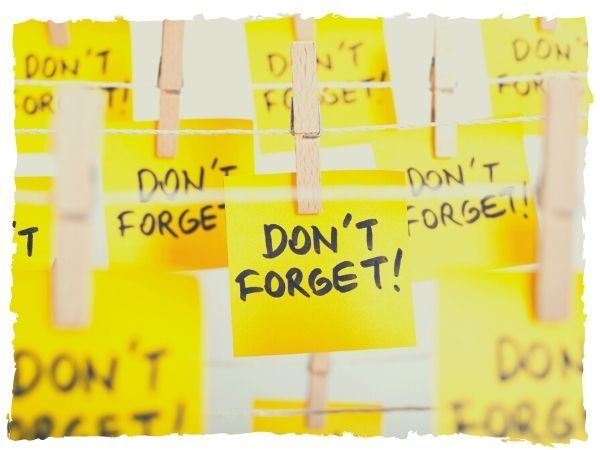In his essay, “Advice to a Young Tradesman”, Benjamin Franklin wrote that “time is money”… further explaining how time is a valuable resource and, therefore, it is better to do things as quickly as possible.
Some may even argue time is our most precious commodity.
You may often feel that there aren’t enough hours in the day to get all you need or want to get done.
You are not alone.
Life moves fast and time has a tendency of slipping away from us, no matter how organized we may be.
Few people have countless hours to spend on learning a new skill… and so we are always interested in shortcuts or CliffsNotesⓇ versions, if you will.
And they do exist.
Today, I’m going to gift you 7 actionable strategies for how to learn anything fast.
You’re welcome!
How to Learn Anything Fast
1. Practice the 80/20 Rule
Coined by Italian economist, Vilfredo Pareto, the 80/20 rule was designed to explain how 80% of our results often come from only 20% of our efforts. And it doesn’t just apply to the field of economics… but in many real-world scenarios.
Sometimes referred to as the Pareto Principle, this method teaches that the biggest results in your life can often be attributed to the small, important actions.
When talking about how to learn anything fast, the principal still applies. In fact, you can think of it as a shortcut to mastery.
How?
That’s simple.
Go straight to the source… the one who has already mastered the skill.
Instead of trying to learn everything there is to know about something, focus on learning only what you need to know to get to that point.
The rule states that 80% of results can be achieved with 20% of the options available to us.
For instance, 80% of a company’s sales likely come from 20% of its product lines. And 80% of what you need to know about building your own website can likely be found in 20% of page creator tools (headings, links etc…).
So if you want to learn a new language, start by cutting out 80% of the words you won’t use much. The ones you barely use on a daily basis in your own language, such as heartburn or planter.
Then, make a point of learning the vocabulary, rather than the conjugation and proper tenses.
You’ll be surprised how well you can get your point across and hold a basic conversation with just the key 20% of every day usage words.
Street. Watch. Good. Bad. Call. Where. What. Is. How. Cost. Restaurant. Bathroom. Wallet.
You get my drift.
From there, think about the everyday phrases you use at home or work. Then, pick the most important 20% to learn in another language.
Phrases like:
Again, you get my drift.
I used both Rosetta Stone and Pimsleur to learn Polish… both of which seem to follow the 80/20 rule, whether they intend to or not.
Babbel is another good one.
And I will say that my vocabulary and mastery of a few key phrases have gotten me by the last few times I visited my husband’s family there.
In fact, I even went into a restaurant to order food… and didn’t come out with a pizza covered in eggplant and peanut butter!
Go me!
Watch this video to learn how you can apply the 80/20 rule or the Pareto Principle to ALL aspects of your life, especially in learning:
2. Deliberate Practice
In layman’s terms, deliberate practice is the art of perfecting a series of small tasks in order to master a concept or skill.
So, instead of spending years trying to be a birdie golfer by improving every aspect of your game at once… focus on the fundamentals that you need to master in order to get there quicker.
Start with your putting, for instance. Practice that over and over for a short amount of time, ideally no more than three sessions experts say. If you haven’t mastered it by then, move along to the other short game aspects within 100 yards of the green.
Pitching.
Then chipping.
The dreaded sand trap.
Again, give it three sessions max.
The long game and your drive come last.
By dedicating a short amount of time to the rudimentary skills, you will become less frustrated as you start piecing them together.
Perhaps the most difficult part about putting deliberate practice in place is breaking down the skill into useful parts… and then allowing yourself to slow down.
Going back to putting, there are many facets to mastering the skill that include:
You can spend time on each of these individually for a set amount of time each day, or all of them for a few hours per day. That’s your call, but repetition and efficiency is key to this technique.
Either way, discipline and patience is required… don’t beat yourself up for making mistakes because that is how you learn.
3. Feynman Technique
So if it’s a complex skill that you are hoping to master, the Feynman Technique may be the way to go.
That’s because its physicist creator, Richard Feynman, hated to write. He was a visual thinker who believed in taking the most complicated concepts and placing them into sketches and charts.
His ultimate goal? To be able to explain even the most detailed and scientifically complex information to a child.

If you can make children understand something intricate, then you must have a good grasp of the material yourself.
There are four basic steps to the Feynman Technique:
Not only is the Feynman Technique a wonderful tool for learning, but it also serves as a window into a different way of thinking… one that lets you deconstruct ideas and rebuild them from the ground up.
This approach believes that learning is a process of growth… kind of like taking a completed puzzle apart and trying to put it back together in the way that makes the most sense.
Note: This is not a memorization technique and likely won’t work well for things such as learning a new language.
The video below talks about the four-step process of the Feynman Technique and how you can use it to improve your ability to learn new things.
4. Pomodoro Technique
Most of us struggle with deadlines… especially the ones that give us too much time.
For instance, if I know a term paper is due next week, there is a very good chance I will wait until just a couple of days before to try and bang it out.
Why do this to myself?
Because I have other things to do. Things that come before that. My life is a series of rolling deadlines.
Lucky for me, the Pomodoro Technique can help with prioritizing much of it.
The Pomodoro Technique is a time management technique where you break down all of your tasks into 25-minute focused blocks of time.
Between each time block, there is a five minute break. And after completing four Pomodoros you are rewarded with a longer break—usually 15 to 30 minutes.
While it may draw some skepticism, the feeling of having a “ticking time bomb” behind you can literally boost performance.
I, for example, have four elementary age children that I am virtually schooling until the Spring. In between that, I have articles to write… emails to answer… blogs to post…. meals to prepare… grocery shopping to do… activities to get to… an exercise routine I’d like to maintain (for fitness and sanity).
So how does this method work for me?
Well, I break each task down by difficulty, or concentration required.
Then I may choose to create consecutive, multiple blocks of time for similar activities.
For instance, home school may require at least 4 pomodoros (or 100 minutes) of time. That’s one per kid.
From there, I see that all of my emails and social media connections can be done at once… even while somewhat distracted. So I set aside back to back pomodoros for that.
Then there are the 2 pomodoros I will set aside for meal planning for the week.
Pomodoros for errands (the break can be for coffee or just to sit on a bench).
Pomodoros for exercise.
Etc….
When it comes to how to learn anything fast, this method can be excellent for setting benchmarks because it cuts down on distractions.
25 minutes is just the right amount of time to feel productive, without feeling the temptation of getting sidetracked.
This beat the clock mentality will keep you focused… while the short breaks will keep you refreshed.
Check out this video that explores how the Pomodoro technique can help you become hyper-focused on important tasks.
5. Take Notes by Hand
I wouldn’t be me if I didn’t allow a simple solution into a “how to” article.
The notion of taking notes by hand has been around forever.
As a kid, that was all I had… well, that or a very old Commodore 64 Computer that worked with an actual cassette tape.
And the popular small tape recorder did enter the scene right around college for me.
But my tried and true method was converting my notes onto index cards… and then reading them over and over.
Memorizing them, if you will.
This method can still be useful when it comes to how to learn anything fast… it just depends on what it is you’re trying to learn.
In fact, researchers at Princeton University and UCLA found that people who took notes by hand listened more actively and were able to identify important concepts.
Conversely, taking notes on a laptop often lead to mindless transcription, as well as an opportunity for distractions to occur… such as email.
If you want to learn a new language, for example, index/flash cards can be excellent for memorizing vocabulary words and key phrases.
6. Mental Spacing
The logic behind the practice of mental spacing lies in the brain’s ability to process information faster if it’s done over time… with rests in between.
While it may seem counterproductive to learning fast… studies have shown that we are better able to recall information and concepts if we learn them in multiple, spread-out sessions.
In fact, we can leverage this effect by using spaced repetition to slowly learn almost anything.
It works for words, numbers, images, and skills… and for anyone of any age, from young to old. The effect cuts across disciplines and can be used to learn anything from artistic styles to mathematical equations.

Spaced repetition might not have the immediacy of cramming or the adrenaline rush of a manic all-nighter… but the information we learn from it can last a lifetime and tends to be effectively retained. In some ways, the spacing effect is a cognitive limitation, yet a useful one—if we are aware of it.
7. The Sleep Sandwich
Study.
Sleep.
Study.
That doesn’t sound too hard, does it?
That’s because it isn’t… in fact, it’s one of the easiest methods you can utilize when it comes to learning anything fast.
Referred to by researchers as the “Sleep Sandwich”, the thought here is to practice the opposite of cramming in order to learn fast.
This also means you can skip the all-nighters and the caffeine jolts.
Your body will thank you.
Science has shown that these methods can lead to us forgetting about 50% of the stuff we want to retain… meaning most of the information that we tried to cram into our brains will never see the light of day.
Sad.
And why is that, you ask?
Well, simply put, the brain needs to time recharge and file all of the information you fed it into its proper memory bins.
In fact, storing memories is one of the most important functions of a good night’s sleep.
While your conscious goes to bed, your unconscious is actively storing all kinds of stuff in your long-term memory. Cramming and all-nighters prevent that.
Not to mention, sleep deprivation can leave you feeling in a “fog”… which is never good on the morning of a presentation at the office or big test.
If you need to squeeze in some last-minute learning study for a few hours, get a good night’s sleep and then pick up where you left off in the morning.
You can still learn fast with this method, just make sure you get a healthy dose of z’s in between.
Final Thoughts on How to Learn Anything Fast
In this article, I’ve offered 7 actionable steps for those of you interested in how to learn anything fast.
I’ve run the gamut, detailing a few of the more complex methods to master… such as the 80/20 Rule and Feynman Technique. And I’ve offered a few simplistic methods, which read more like tricks… but can be just as effective in the right situation.
If you master one of the first four techniques on my list, you will successfully retrain your brain to learn differently and more efficiently in a variety of scenarios.
If you aren’t quite ready for that, the last three techniques on my list will serve as quick fixes to get you where you want to be faster in most cases.
That being said, if you combine a few of the techniques… say Pomodoro with taking hand-written notes, you’ll likely have mastered the art of how to learn anything fast in no time!
And if you're looking for more resources to help you develop your learning habit, these articles might help:
- 4 Stages of Learning & Competence: A Simple Guide
- 7 Styles for Learning New Things and Retaining Information
- 18 Habits to Become Smarter & Improve Your Intelligence
Finally, if you want to take your goal-setting efforts to the next level, check out this FREE printable worksheet and a step-by-step process that will help you set effective SMART goals.

Nicole Krause has been writing both personally and professionally for over 20 years. She holds a dual B.A. in English and Film Studies. Her work has appeared in some of the country’s top publications, major news outlets, online publications, and blogs. As a happily married (and extremely busy) mother of four… her articles primarily focus on parenting, marriage, family, finance, organization, and product reviews.


